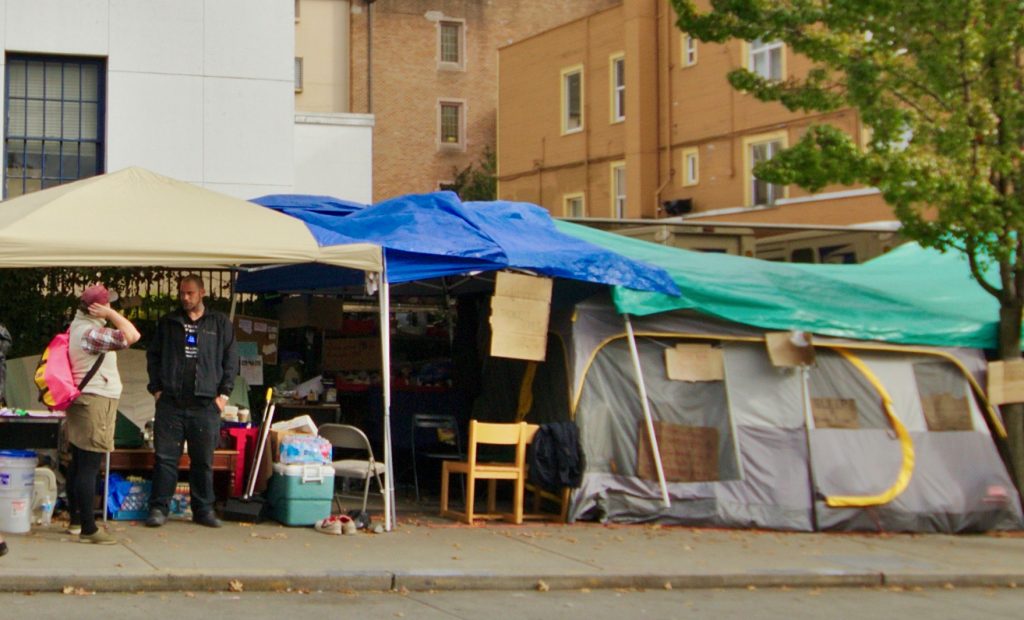Hurricanes, homelessness, and human needs – 2017 Annual Report
In 2017, we made progress toward our goals against a background of hurricanes, homelessness, and a new awareness of human needs that underlines the significance of our work. We invite you to download our 2017 PHLUSH Annual Report.
The deadly consequences of hygiene facilities that came too late
Public toilet and hygiene facilities protect human dignity, public health, and the attractiveness of shared urban space. The year 2017, however, will be remembered for San Diego’s epidemic of Hepatitis A, a disease spread via the fecal oral route. Public health authorities scrubbed the streets with bleach, set up portable toilets and hand-washing stations, vaccinated 10,000 people, and ultimately blamed the vast majority of the 20 deaths on the lack of restrooms serving homeless residents. This should not have happened in an affluent American city.

The homes of many residents of West Coast cities are tents on the sidewalk. (Photo by Sage Ross CC BY-SA 4.0 Wikimedia Commons)
Urban areas of the United States enjoy complex sewer systems and sophisticated wastewater treatment plants. A variety of onsite technologies serve rural households. But unless the vulnerability of sewer infrastructure and the failure of many septic systems are firmly on the policy table, the risks remain.
Water treatment facilities in ruin
2017 will also be remembered for the devastation brought by Hurricanes Harvey, Irma, and Maria. Hundreds of wastewater treatment facilities in low-lying areas of Texas, Florida, and Puerto Rico were rendered inoperable. Flooding also caused septic tanks to overflow, sullying soils and ground and surface waters. Now Texans and Floridians struggle with staggering repair costs and thou sands of Puerto Ricans are still unable to return to their homes. As we move through 2018, the West Coast housing shortage continues to push adults and children into homelessness.

Hurricanes in 2017 devastated US communities and sanitation infrastructure in Texas, Florida and Peurto Rico. (Hurricane Maria photo by By Antti Lipponen CC BY 2.0 Wikimedia Commons)
Public hygiene facilities can help them stay in jobs and school. Meanwhile, climate change, unpredictable weather systems, seismic risks, and sea level rise threaten America’s infrastructure. As people start to question the use of drinking water to transport pee and poop, there is growing interest in codes for rainwater harvesting, greywater use, container-based toilet systems, and treatment through composting.
Eating and excreting are activities essential to human life.
Eating and excreting are activities essential to human life. One activity is a popular subject of everyday conversation, the other remains shrouded in silence and taboo. Societies strive to meet both physiological needs, yet often fail in the latter case. Greater public awareness of how we manage our urine and feces can help us address and avoid some of the tragedies that marked 2017.
To read more, please visit our 2017 Annual Report.